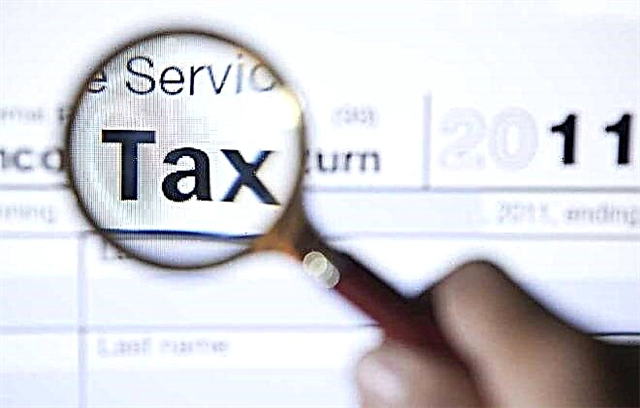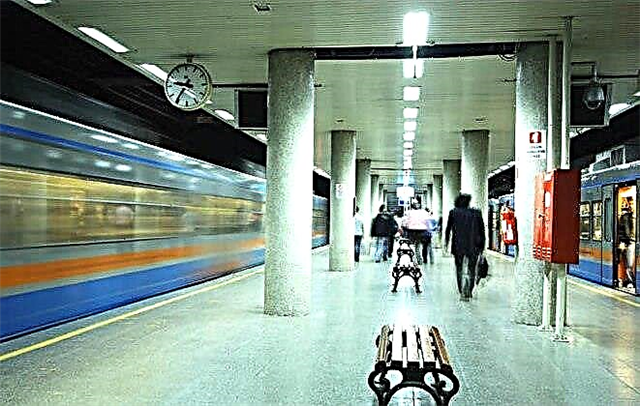Over 20 million tourists visit Greece annually. Three quarters of this huge stream passes through its beautiful capital, which hospitably welcomes travelers from all over the world. The metro in Athens is considered one of the oldest in Europe, but it successfully copes with the most important transport task. Today it is a modern enterprise serving over a million passengers a year. Managed by companies developing the metro network using mathematical modeling methods.

History of the Athens Metro
The date of birth of the Greek metro is considered to be February 27, 1869. Then a narrow-gauge line was launched from the port of Piraeus to the city center. Thus, the Athens subway is only six years younger than the London one. The road was ground and an ordinary steam locomotive went along it. A full-fledged subway appeared only twenty years later, when the area of Thissio and the Omonia square were connected by a tunnel.
At the beginning of the last century, the branch was electrified and a tram was launched on it. The metro grew in size, became more comfortable, and was constantly modernized.
The second and third lines were laid especially for the 2004 Olympic Games. After their commissioning in 2000, the first was closed for reconstruction, after which the Athenian metro acquired a unique look that amazes passengers to this day.
During the construction of the tunnels, more than 50 thousand archaeological artifacts were discovered. They were not brought to the surface, but placed under glass right in the halls of the Sintagma station, some of which were painted by local impressionists. Now it is also a giant underground museum.
Route network
The Metro plays a vital role in the transport links of the Greek capital, linking key areas of the city. An overview map of the Athens metro with a tram line and stops indicated in Russian is as follows:

As of 2021, the system includes three lines. The first and oldest (green) is operated by Urban Rail Transport S.A., which also operates the city tram and express train at Athens International Airport. Official website of the company ─ www.stasy.gr.
The second (red) and third (blue) metro lines are operated by Attiko Metro S.A., which specializes in this type of transport (www.ametro.gr). The total length of the three branches is approximately 85 km. Today there are 65 stations in total:
- green ─ 24;
- red ─ 20;
- blue ─ 21.
The current development plan for the metro includes the construction of a 4th line with 35 stations, 38 km long, which will include two radial U-shaped lines, as well as one straight through the center of Athens and will connect the rest of the city into a single transport hub. But this is in perspective.
It is not difficult to navigate the subway. The stations are equipped with signs in English, electronic boards showing the arrival time of the next train. The carriages have boards informing about the name of the next stop. For the convenience of tourists, there is also a Russian-language version.

The standard diagram of the Athens metro in English is shown in the following diagram.

As you can see, Line 1 (green) connects the northern part of the city (Kifissia region) and the main seaport of the country ─ Piraeus. Length ─ 25 km. The duration of the trip between the end stations is 50 minutes. The most significant for tourists are as follows:
- "Thissio", located in the historic center;
- Omonia is the main transfer hub;
- "Monastiraki" - the closest station to the ancient Plaka area, transition to the blue line.
Blue and red branches
The blue line (Line 3) is about 41 km long and allows you to get from Athens to the airport by metro. The branch begins in the Agia Marina area on the southwestern outskirts of the Greek capital, and ends in the north. Travel time is about 50 minutes.
The route is partially on the surface. Therefore, individual trains run only to the station "Dukissis Plakentias", where the tunnel ends. Twice an hour, a special train leaves from here to the airport.
Transfer stations are key here:
- "Syntagma" - transfer to the red line, exit to the main square of the city, on which the building of the Greek Parliament is located. It was this station that was turned into a museum;
- “Monastiraki” - transition to the green line;
- "Dukisis Plakedias" - transfer to the express train to the airport.
The red line (Line 2) Athens metro, a little less than 20 km long, crosses the city from west to east, connecting the suburbs of Antupoli and Elliniko. You can get from one end to the other in half an hour. The following stations are of interest here:
- "Akropolis", located next to the Acropolis and the museum of the same name;
- "Syntagma" and "Omonia", which were already mentioned above.
How the fare is paid
The fare does not depend on the duration of the trip. The cost of the metro in Athens varies according to the type and duration of the ticket:
- one-time ─ € 1.4. Valid for 90 minutes after activation, i.e. from the moment of the first landing. The number of transfers is not limited, the ticket is suitable for use on other types of public transport. Discount (children from 6 to 18 years old, students) costs € 0.7;
- daily ─ € 4.5. Valid for 24 hours;
- for five days ─ € 9;
- weekly subscription ─ € 14;
- monthly ─ € 45;
- annual ─ € 450.
How much the metro costs in Athens at the time of your trip, you can find out on the portals of the service companies (see above). Children under 6 enjoy free travel and student discounts.
For guests of the city, there is an opportunity for € 22 to purchase a tourist ticket, which is valid for three days and allows you to use any type of city transport without any restrictions, as well as ride to the airport there and back.
Now how to buy a ticket for the Athens metro. This is available at ticket offices, which are open every day from 8:00 to 22:00, or 24-hour vending machines right at the stations. The latter are push-button and touch-sensitive. The menu has a choice of Russian.
The process of buying a ticket is as follows:
- You need to choose a type.
- When the value is displayed, enter the amount into the receiver (the device accepts banknotes, coins and bank cards).
- Get a ticket and change.
Turnstiles, traditional for Russians, began to appear last year. For the time being, most of the validators set at login are used. Metro inspectors regularly check tickets. The fine is sixty times the fare.
Electric train "Airport Express"
For a trip to the airport, a regular metro ticket will not work. The ticket is valid for 90 minutes for a one-way trip. The cost of a one-time pass depends on the place of boarding and the number of passengers:
- per person valid for 90 minutes ─ € 10, concessionary ─ € 5;
- one trip from Pallini, Peania-Kantza and Koropi stations - € 6, concessional ─ € 3;
- for two ─ € 18;
- for three ─ € 24;
- one-time per person with the possibility of returning after 48 hours ─ € 18.
What do they carry in the Athens metro
The Greek metro in Athens is well equipped. The operating rolling stock includes 42 six-car trains manufactured by the world's leading companies. A total of 66 trains were delivered in three batches:
- Alstom-Siemens-ADtranz (2000) ─ 28;
- Hanwa-Rotem-Mitsubishi (2004) ─ 21, seven of which operate on the Airport Express line;
- Hanwa-Rotem (2009) ─ 17.
 All trains are air conditioned and rated for a maximum speed of 80 km / h. The average travel speed on different lines is different:
All trains are air conditioned and rated for a maximum speed of 80 km / h. The average travel speed on different lines is different:
- line 1 ─ 48 km / h;
- line 2 - 35 km / h;
- line 3 - 40 km / h.
Schedule
How many hours the metro operates in Athens - important information: there are so many attractions, cafes and restaurants in the city that you can easily miss the last train.
The green line is available from 5 am until almost 1 am.Trains on red and blue on weekdays start 30 minutes later and stop half an hour earlier. On holidays, on Friday-Saturday and Saturday-Sunday nights, the Athens metro is extended to 02:30.
During daytime rush hours, trains alternate at intervals of no more than 3 minutes. In the morning and evening ─ approximately every 10 minutes. The rest of the time ─ on average after 5 minutes. The first train leaves the airport at 06:30, the last at 23:30.
List of stations
The green line includes the following stations (with added departure times in minutes):
- “Piraeus” ─ +00;
- “Faliro” ─ +04;
- “Moskhato” ─ +07;
- “Kalithea” ─ +09;
- “Tavros” ─ +11;
- “Petralona” ─ +13;
- “Thisssio” ─ +15;
- “Monastiraki” ─ +17;
- “Omonia” ─ +19;
- Victoria ─ +21;
- “Attica” ─ +24;
- “Ayios Nicholas” ─ +26;
- “Kato Patysia” ─ +28;
- “Ayios Eleftarios” ─ +30;
- “Ano Patysia” ─ +31;
- “Parissos” ─ +34;
- “Pevkakya” ─ +35;
- “Nea Ionia” ─ +37;
- “Heraklio” ─ +39;
- “Irini” ─ +42;
- “Nerandzotissa” ─ +44;
- “Marusi” ─ +47;
- "TO. A. T. " ─ +49;
- “Kifissia” ─ +51.
On the website of the management company, the departure schedule is presented as in the following picture.

The second line includes the following Athens metro stations:
- Antupoli ─ +00;
- “Peristeri” ─ +01;
- “Agios Antonios” ─ +02;
- Sepolia ─ +04;
- “Attica” ─ +05;
- “Larisis” ─ +07;
- “Metaxourgio” ─ +08;
- “Omonia” ─ +10;
- “Panepistimio” ─ +11;
- “Syntagma” ─ +13;
- Acropolis ─ +14;
- Singru-Fix ─ +16;
- “Neos Cosmos” ─ +17;
- “Ayios Ioanis ─ +18;
- “Daphne” ─ +20;
- “Ayios Dmitrios / Alexandros Panagulis” ─ +22;
- Ilioupoli ─ +22;
- “Alimos” ─ +24;
- “Argyroupoli” ─ +28;
- “Elliniko” ─ +29.
Accordingly, the schedule for her:

The third line contains:
- Agia Marina ─ +00;
- “Egaleo“ ─ +02;
- “Eleonas” ─ +04;
- “Keramikos” ─ +06;
- “Monastiraki” ─ +08;
- “Syntagma” ─ +10;
- “Evangelimos” ─ +12;
- “Megaro Musikis” ─ +13;
- Ambelokipi ─ +15;
- “Panorama” ─ +17;
- “Katehaki” ─ +19;
- “Ethnic Amina” ─ +20;
- “Cholargos” ─ +22;
- “Nomismatokopio” ─ +23;
- “Agia Paraskevi” ─ +25;
- “Halandri” ─ +27;
- “Dukissis Plakentias” ─ +29;
- Pallini ─ +35;
- “Peania-Kandza” ─ +37;
- “Koropi” ─ +43;
- “Aerodromio” ─ +49.
Timetable for this thread from the official website:

Conclusion
As you can see, the question of how to use the metro in Athens is not difficult even for a tourist. It is easy to understand the traffic patterns, the purchase of passes is available everywhere, the trains are high-speed and comfortable.











